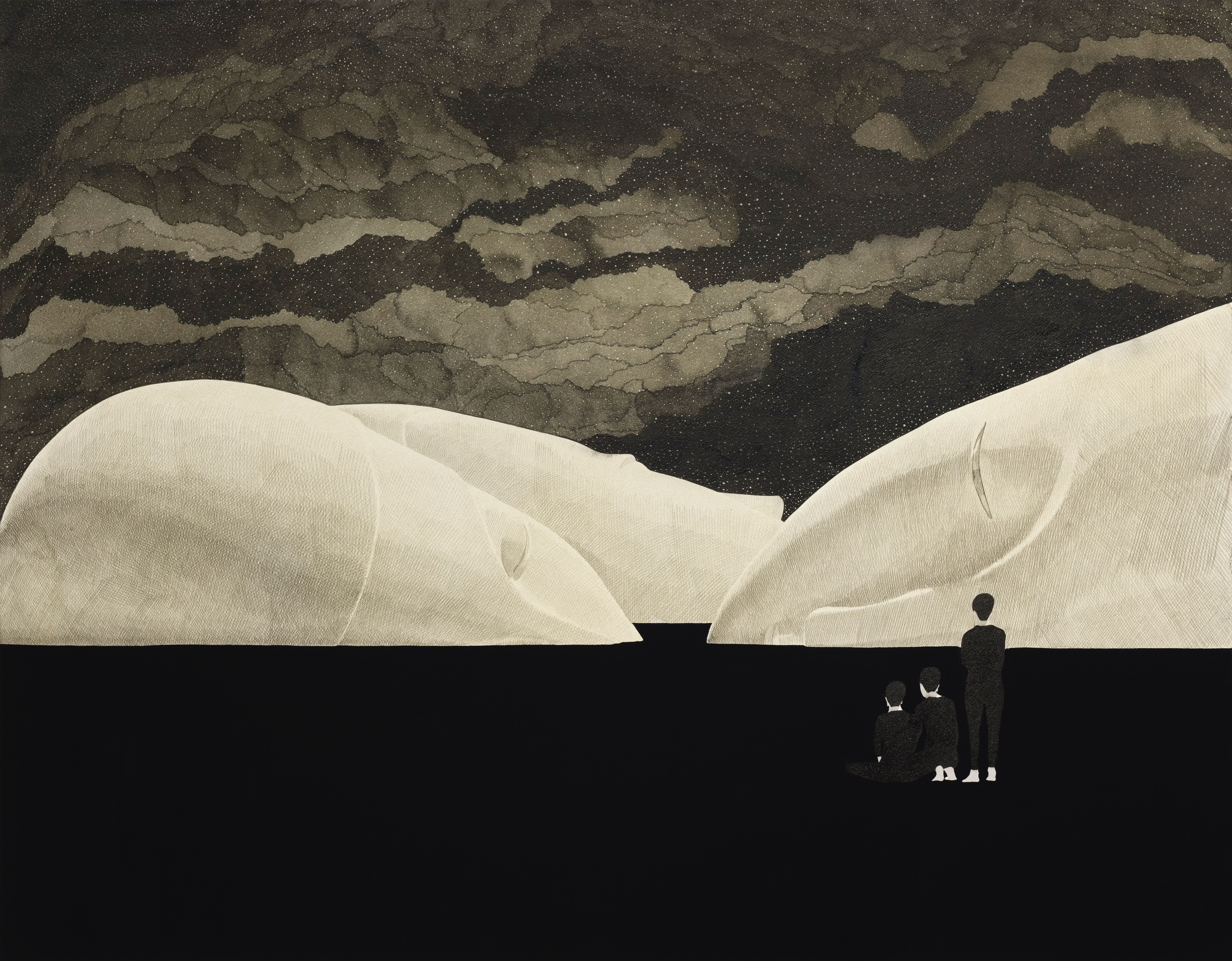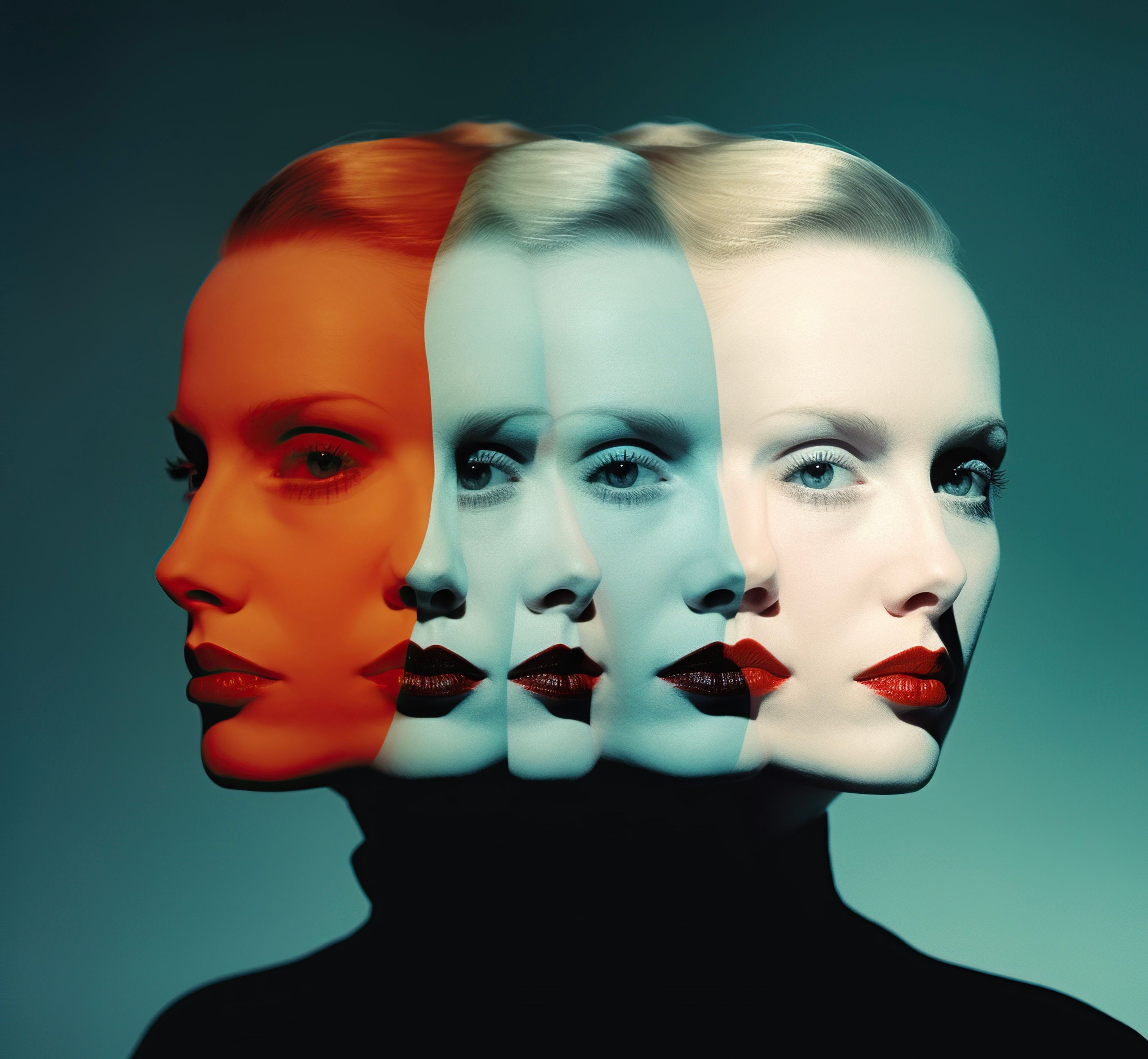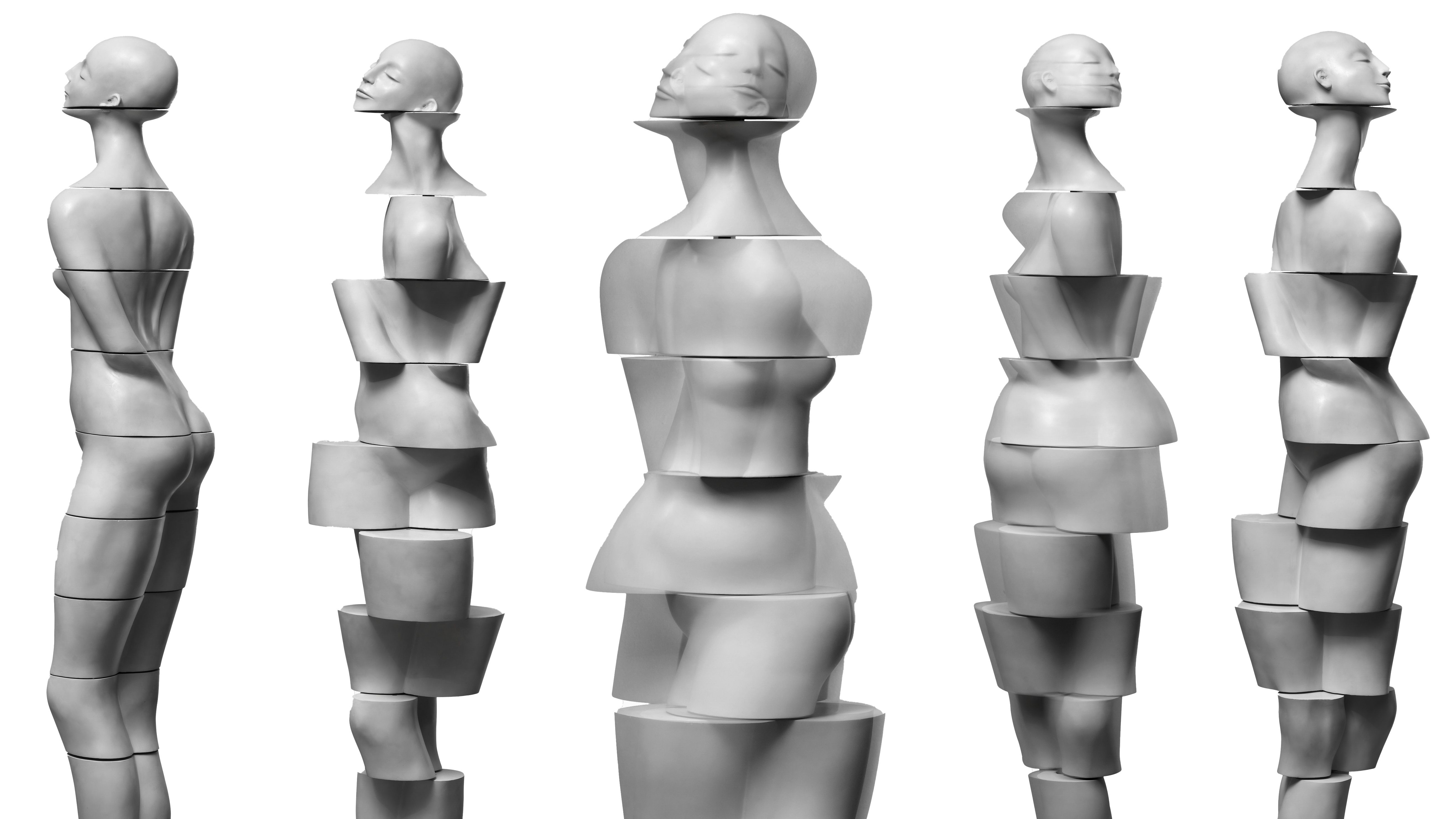Between black ink and white paper, Moonassi builds a language that feels like a silent diary. His lines fall lightly, holding invisible tensions, memories, contradictions, thoughts that do not need to become explanations. Faceless figures emerge from the background not to tell a story, but to welcome the stories of those who observe them. Black, a constant presence in his work, does not close but opens up, holding shades that shift with the light, with time, with each gaze. Moonassi does not seek conclusions or fixed messages. He chooses the simplicity of tools and the complexity of perspective, letting the work remain, speaking quietly in his place.
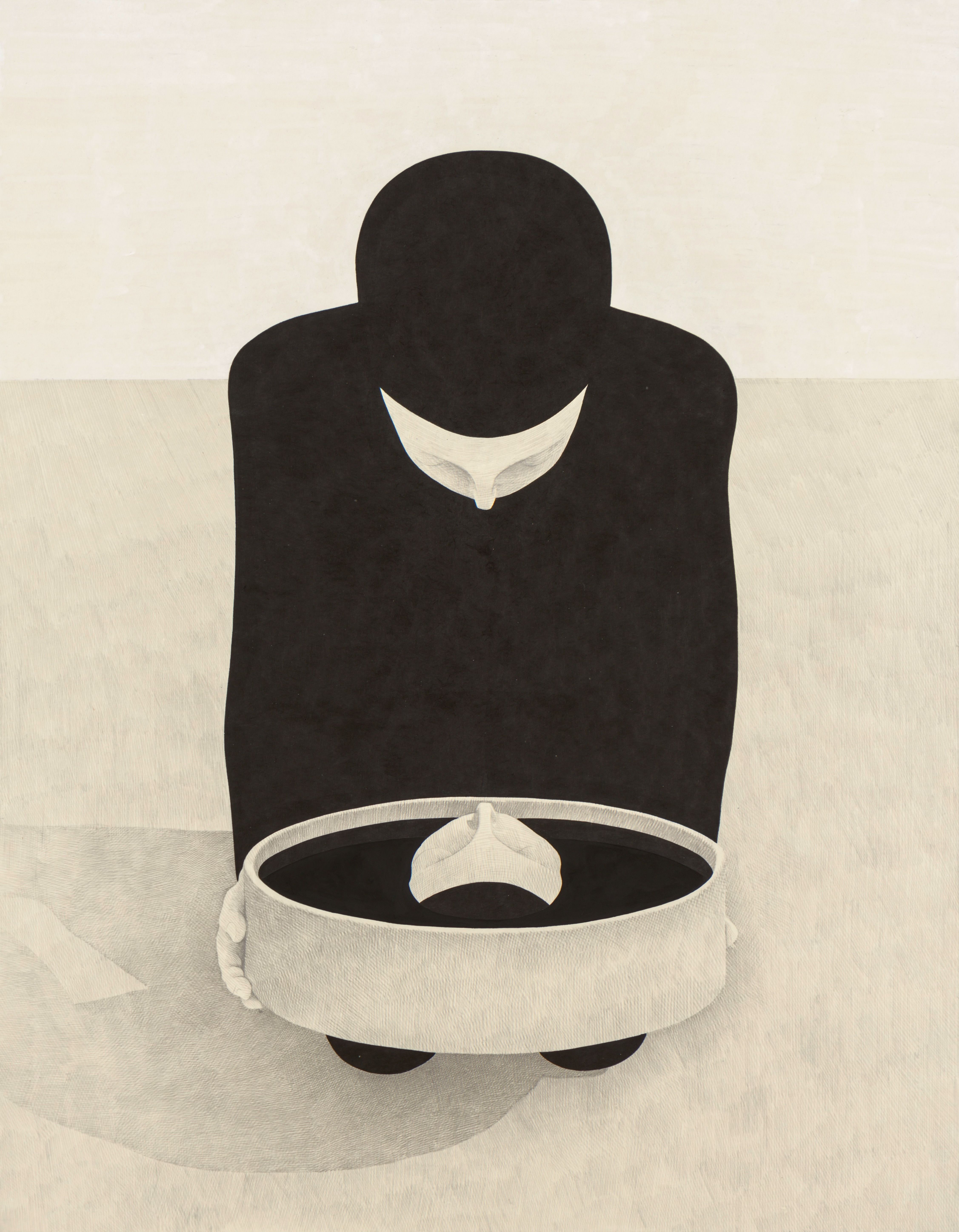
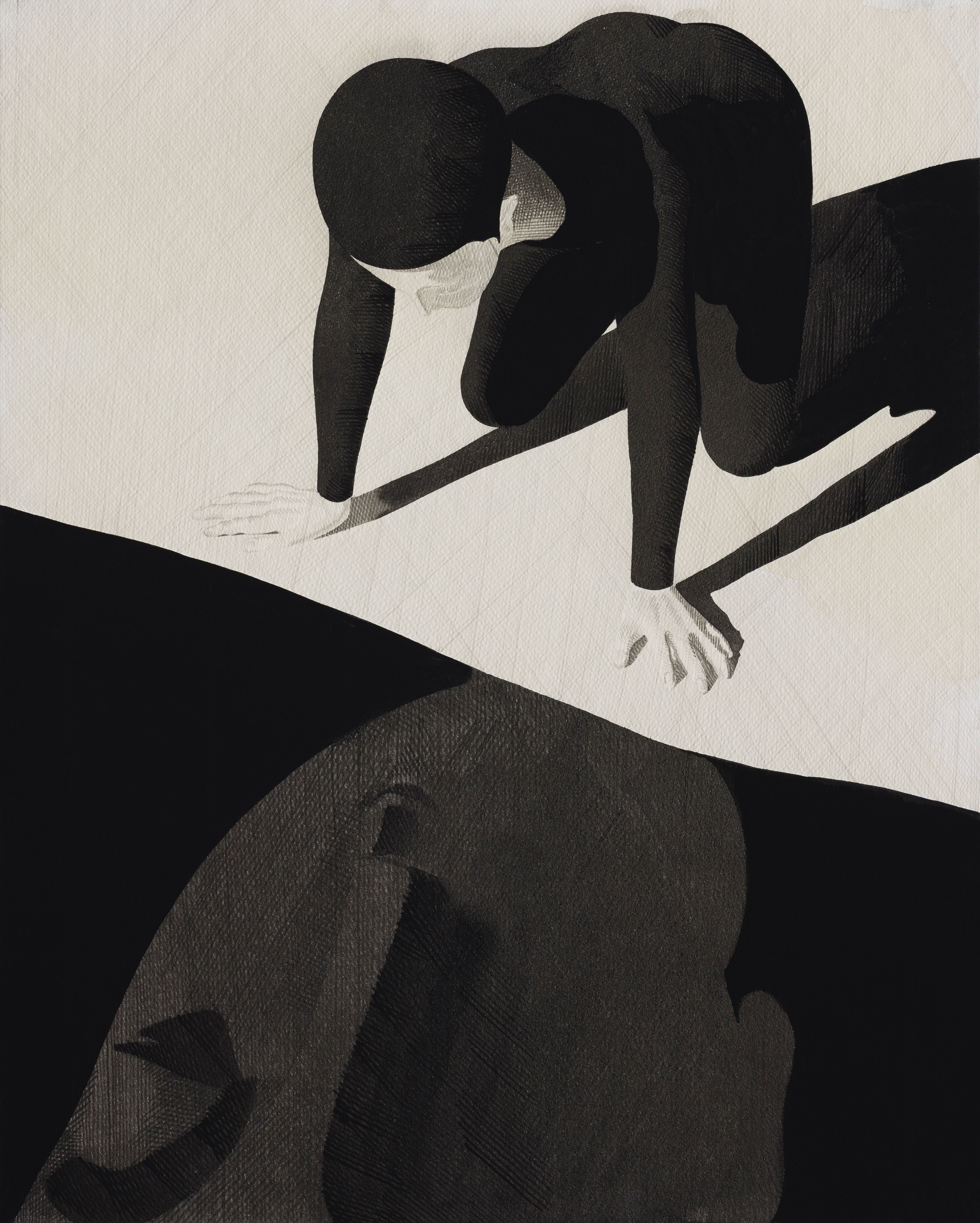
I would like to begin with what feels so defined in your work: paper, ink, essential gestures, spaces that speak. How did this language, at once essential and profound, take shape and continue to accompany you today?
Since I was young, I’ve always been more interested in the essential than the superficial. That may come from reading Laozi, Zhuangzi, and Indian philosophy early on. During university, while others experimented with new materials and expressive techniques, I didn’t think that was very important. If the story in the drawing was strong, any material would do. So I spent more time on the ideas and simply used paper, pen, or marker. Later, I started using ink—not for symbolic reasons, but because black felt like the most basic way to represent something. Ironically, while I didn’t focus on techniques, people seemed to find that simplicity unique.
Black is the color that dominates your artistic exploration. It is not absence, but density, depth, and silence. What does black represent to you? And has its meaning changed for you over time?
I don’t want to attach too much mystery to the color black. I just feel that it’s enough. It offers endless possibilities without needing other colors. I think my love for black may be similar to why I enjoy the night. In darkness, I feel more connected to myself. Boundaries fade, and everything becomes soft and blurry, like being underwater. That atmosphere is something I really like, and I believe it comes through in my work.
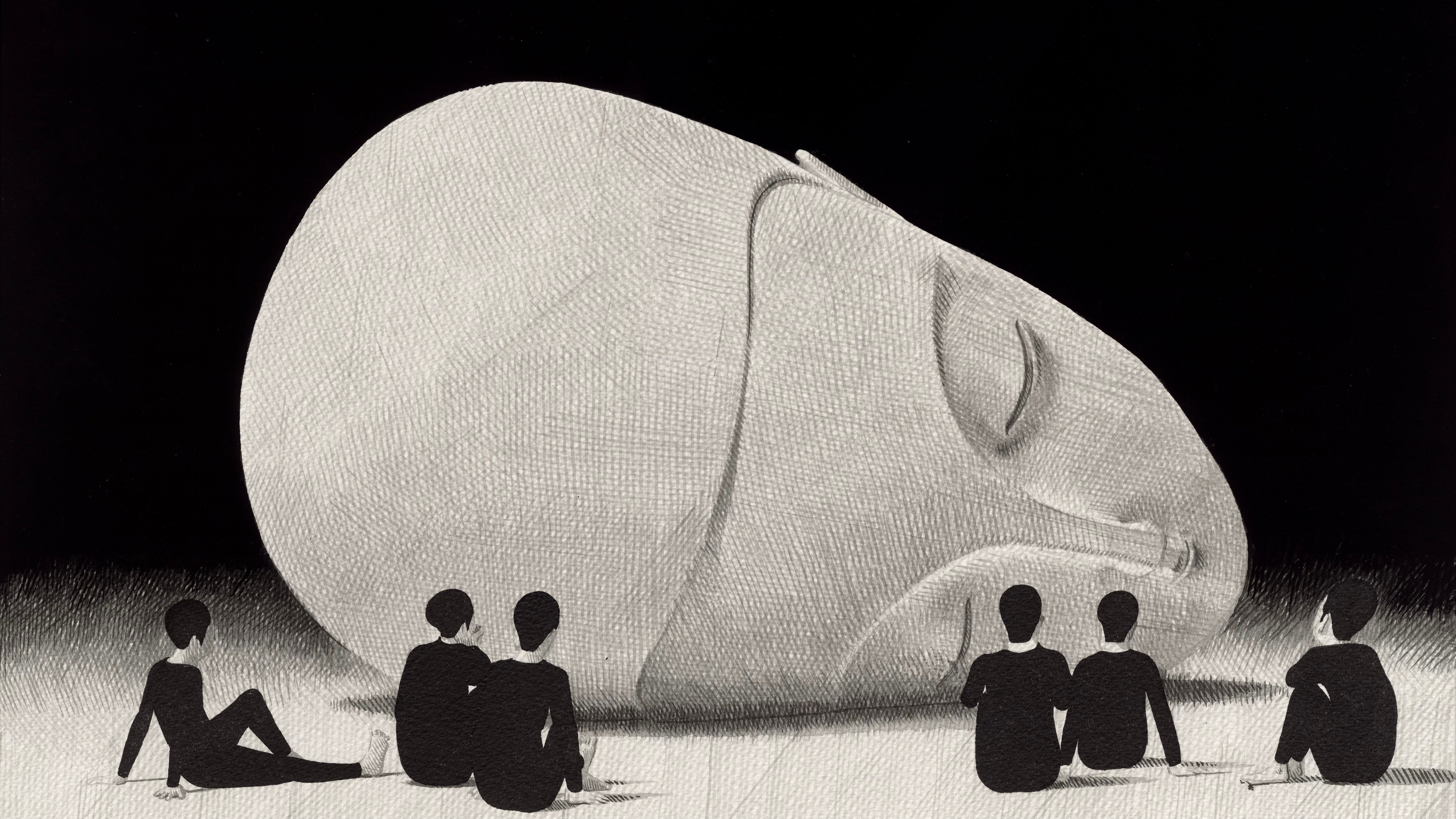
Your artist name, Moonassi, was born from the Buddhist concept of the absence of ego. And yet, every work carries traces of its creator. What do you feel remains of you within your drawings?
My work holds many sides of me: the parts that fear the past, struggle in relationships, feel sadness and loneliness, and also enjoy being alone. Recently, I’ve been trying to remove as much of myself as possible from my drawings. I aim to draw emotionless figures, just as forms.
When people call you Moonassi, what do you feel they are truly calling?
Not many people actually call me by name, and those who say “Moonassi” are usually gallerists or viewers. So I assume they’re referring to me as an artist. Since the name means “no me,” it still feels a bit amusing—like they’re calling someone who doesn’t really exist.
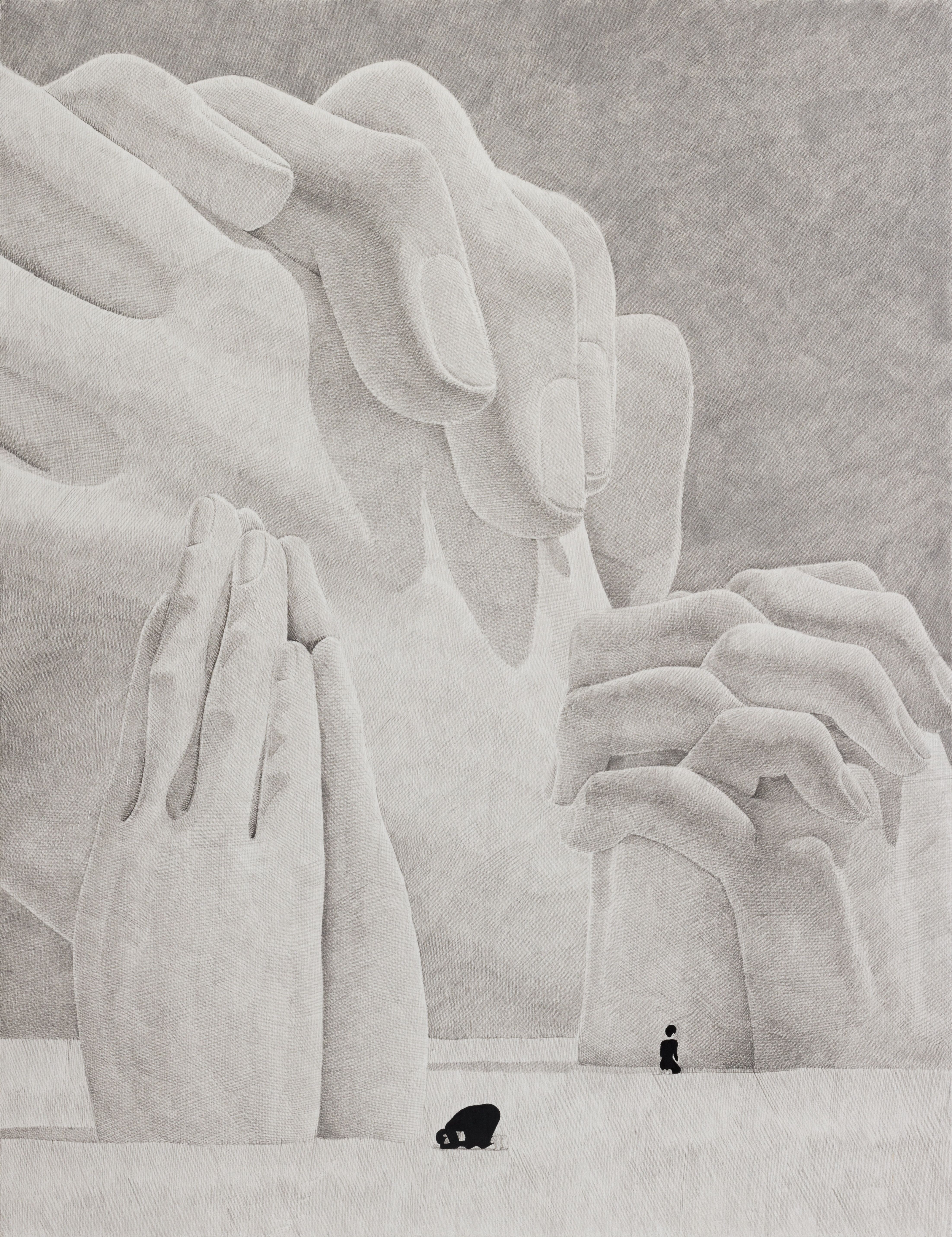
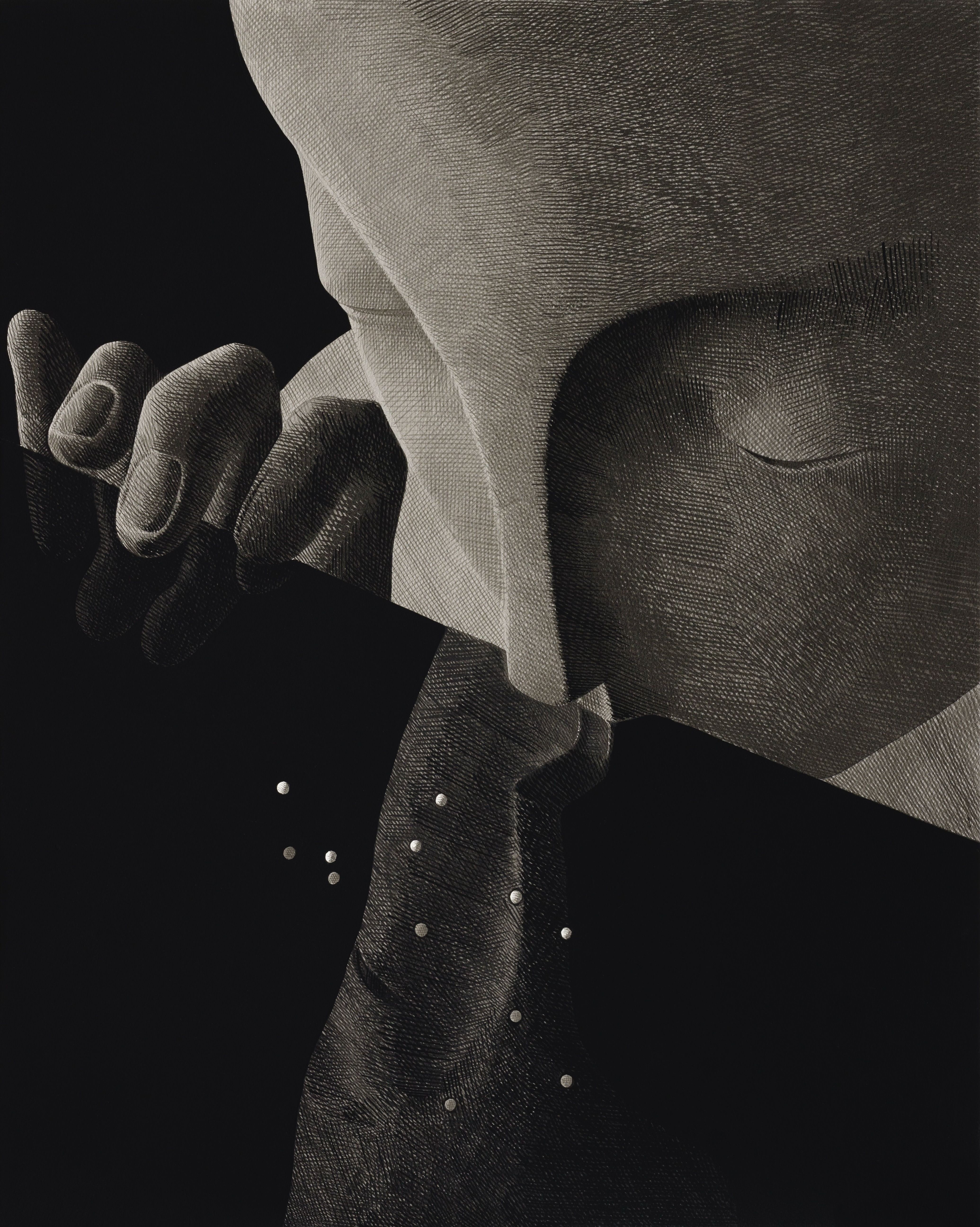
Your figures have no defined faces, yet they speak profoundly. What are you seeking in these bodies suspended between presence and absence?
Like scientists mapping the brain to understand the mind, I think I’m drawing a map of emotions from inside myself. If I understand my own emotions better, maybe I can understand others too. So in a way, I draw to understand myself and to have better relationships with others.
Have you ever dreamt of one of your drawings before creating it?
Not in a dream, but I sometimes see completed images in my mind during the day.
You once mentioned that you don’t expect the meaning you place in a drawing to reach viewers exactly as you intended. But when you draw, are you seeking to clarify something for yourself, or do you allow the drawing to remain a mystery even to you?
Usually, I begin with a clear idea. But as I continue, I sometimes hide or twist the meaning, even from myself. I don’t draw to release emotions I already understand. Instead, I look forward to discovering something new through the process.
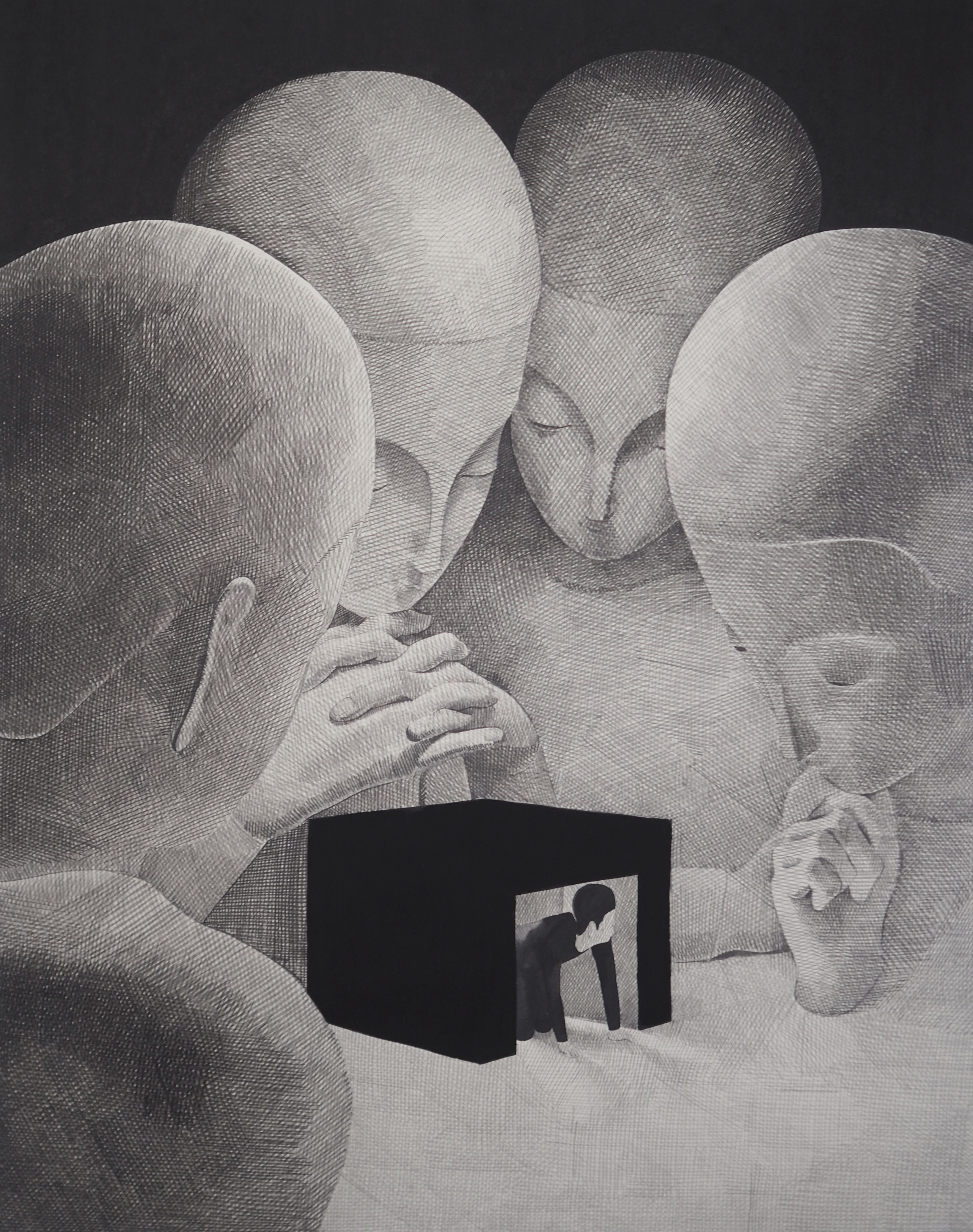
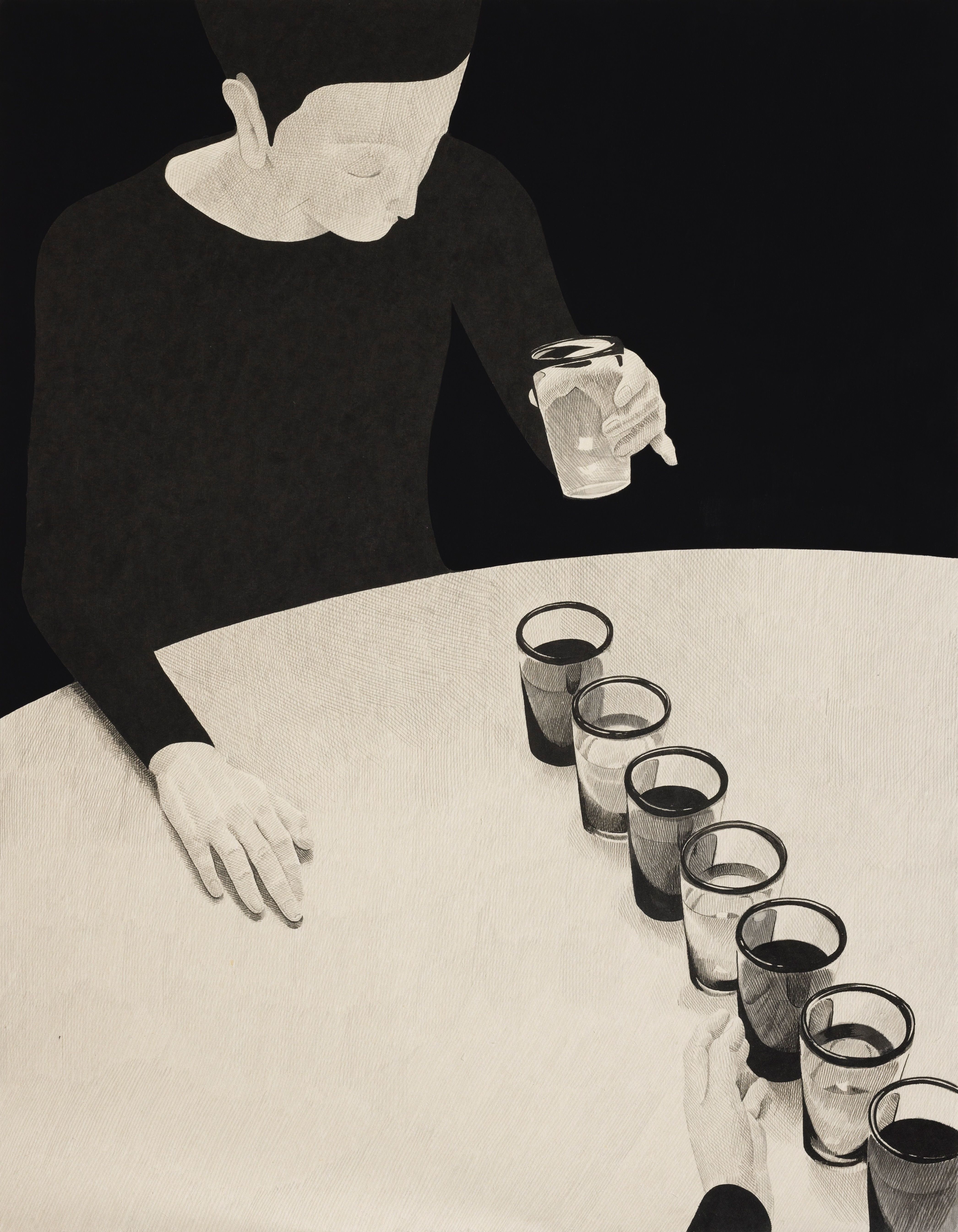
If you could inhabit one of your own works, what kind of reality would it be? Would it feel comforting, unsettling, surreal, silent? And why?
Since my drawings are full of my own stories, being inside one might feel like a terrible nightmare. When I created the name “Moonassi,” I hoped to move away from myself and create something not just about “me.” I know that’s impossible, but ideally, I’d like to enter a scene where I could observe from a distance—free from emotional conflicts.
You have once said you wish to live freely and serenely. What does “freedom” truly mean to you today?
Freedom, to me, is a state where no one around me feels uneasy or sorry because of me. It’s not something I can feel alone anymore. True freedom now means peace shared with the people I care about.
